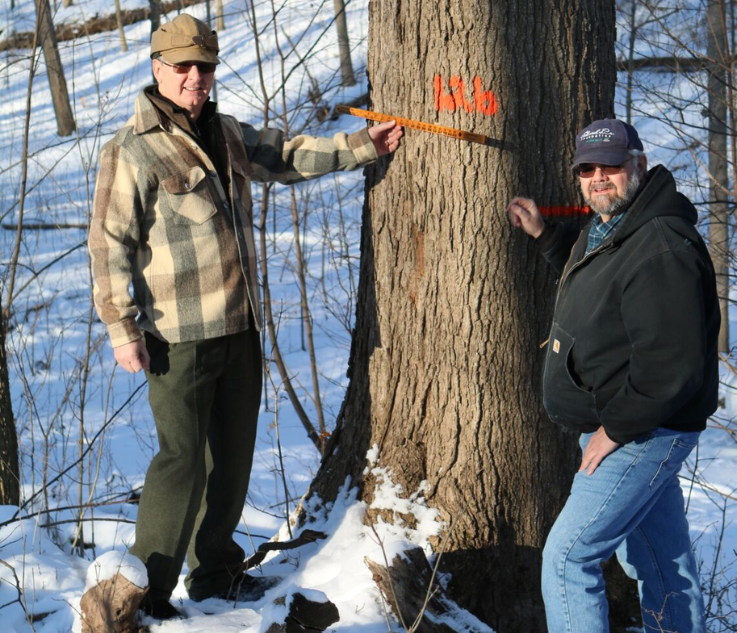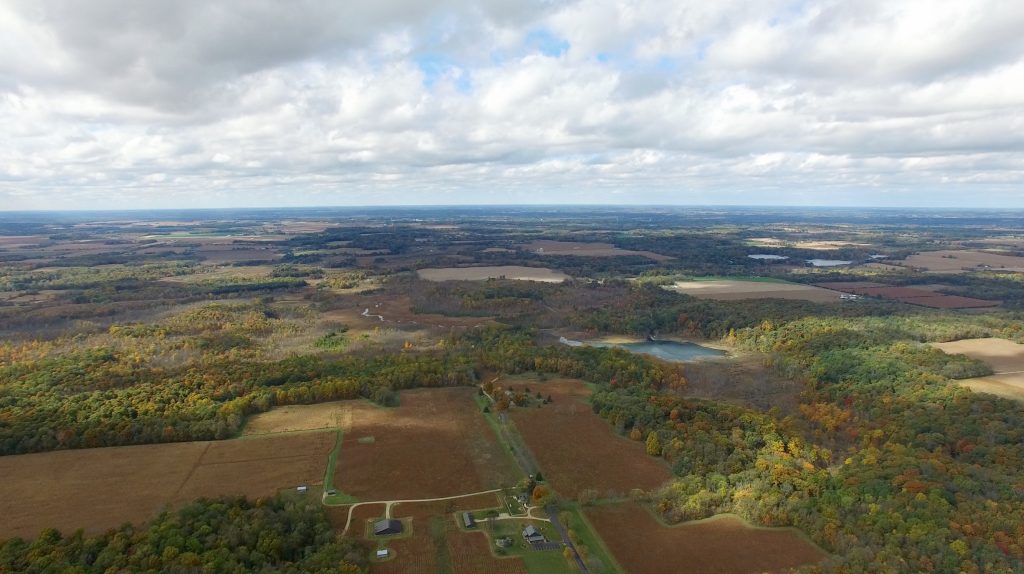Environmental management
best practices at Big Rock Valley
Our primary environmental objective at Big Rock Valley (BRV) is to practice good stewardship — to promote and maintain the diverse native species with particular attention to listed species. Perhaps most important is to consider the consequences of our actions, knowing that anything we do (or don’t do) will have a negative effect on something else.

Woodlands
BRV has about 700 acres of woodlands, comprised of maple, beech, oak, hickory and black cherry and other varieties of northern mixed hardwoods.
Our woodland management strategy focuses on environmental diversity and long-term sustainability, meaning that trees are not felled just because they are large. In fact, it’s common to see trees at BRV that are 30 inches or larger in diameter. These trees no longer produce wood mass as quickly as smaller trees, but their height and full canopy create unique microhabitats.
To show the effects of different forestry management styles, the foundation has converted 94 acres of woodland into demonstration plots. The management styles include:
- Environmental diversity (our predominant management style)
- High-intensity timber.
- Natural or no management.
- Old-growth (basically “no-harvest” areas. If thinning is done, trees and logs are left in the woods to decay).


Grasslands
Prairies were once widespread in southern Michigan until the 1800s when settlers converted this ecosystem to agricultural land. Experimental patches of prairie grasses were started at BRV in 1994. Today the foundation has about 300 acres of prairie, with about 100 different species of grasses and flowering plants.
“Prairie grass provides important food and cover for wildlife, including many grassland birds,” points out Jay Suseland, the foundation’s director of grounds maintenance. “The wildflowers that flourish in prairies also serve as a food source for insects, which provide food for other species using the habitat.” Strips of prairie grass have also been planted on the perimeter of crop fields at BRV, creating corridors that connect multiple habitats and enable wildlife to migrate more easily from one area to another.
Savannas are another disappearing ecosystem that the foundation is trying to restore. A mosaic of open grassland and scattered trees (ranging from four to 50 per acre), savannas serve as the primary habitat to many animals, including redheaded woodpeckers, a species of special concern.
Wetlands
Another habitat that has seen drastic declines and has been subject to degradation throughout recent history is wetlands. BRV has about 500 acres of wetlands, which include a 10-acre lake, ponds, streams, fens and marshes. The area’s many natural springs provide abundant water flow to these wetland areas, ensuring an influx of fresh nutrients and a healthy ecosystem.
By protecting Big Rock Valley’s wetlands, we are conserving critical habitat to some 30 varieties of amphibian and reptile species. Many of these are rare and threatened species, including the eastern massasauga rattlesnake, and they are primarily dependent on these wetland systems.
“I believe the amount of quality wetland habitat we have is one of the main reasons the property is a biodiversity hotspot compared to the local region,” adds Jarod Reibel, the foundation’s director of physical resources.


Habitat Enhancement
Maintaining BRV’s biodiversity calls for a number of habitat enhancement initiatives, including prescribed burns, which are planned, controlled fires. Prescribed burns prevent savanna, prairies and even wetlands from reverting back to mixed-hardwood woodlands, which is the climax ecosystem in southwest Michigan.
The foundation’s land stewardship team also creates a variety of structures to help support endangered wildlife and stimulate biodiversity such as:
- Aspen regeneration stands
- Hibernacula
- Vernal ponds
- Turtle nest protection
- Osprey nesting platforms
